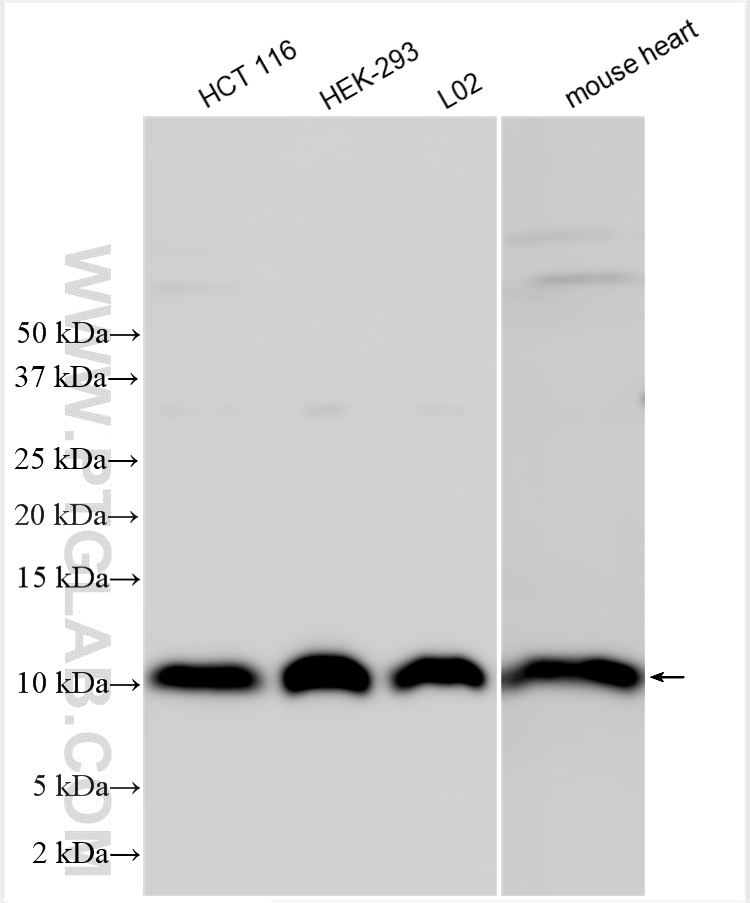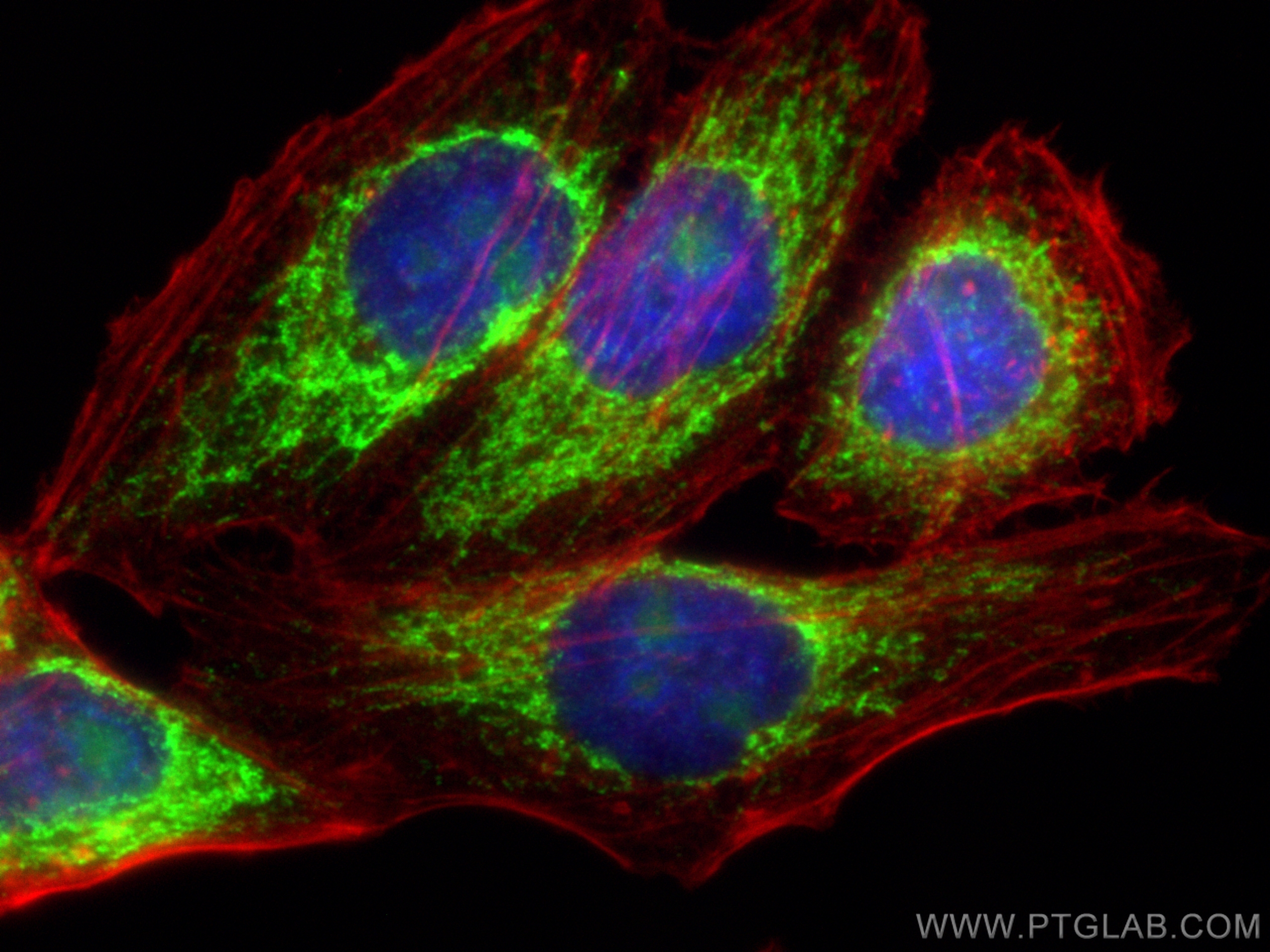验证数据展示
经过测试的应用
| Positive WB detected in | HCT 116 cells, HEK-293 cells, L02 cells, mouse heart tissue |
| Positive IF/ICC detected in | HepG2 cells |
推荐稀释比
| 应用 | 推荐稀释比 |
|---|---|
| Western Blot (WB) | WB : 1:500-1:1000 |
| Immunofluorescence (IF)/ICC | IF/ICC : 1:200-1:800 |
| It is recommended that this reagent should be titrated in each testing system to obtain optimal results. | |
| Sample-dependent, Check data in validation data gallery. | |
产品信息
31561-1-AP targets MIC10 in WB, IF/ICC, ELISA applications and shows reactivity with Human, Mouse samples.
| 经测试应用 | WB, IF/ICC, ELISA Application Description |
| 经测试反应性 | Human, Mouse |
| 免疫原 | MIC10 fusion protein Ag34301 种属同源性预测 |
| 宿主/亚型 | Rabbit / IgG |
| 抗体类别 | Polyclonal |
| 产品类型 | Antibody |
| 全称 | chromosome 1 open reading frame 151 |
| 别名 | C1orf151, FLJ36999, FLJ75158, UPF0327 protein C1orf151 |
| 计算分子量 | 9 kDa |
| 观测分子量 | 10 kDa |
| GenBank蛋白编号 | NM_001032363 |
| 基因名称 | C1orf151 |
| Gene ID (NCBI) | 440574 |
| RRID | AB_3670036 |
| 偶联类型 | Unconjugated |
| 形式 | Liquid |
| 纯化方式 | Antigen affinity Purification |
| UNIPROT ID | Q5TGZ0 |
| 储存缓冲液 | PBS with 0.02% sodium azide and 50% glycerol, pH 7.3. |
| 储存条件 | Store at -20°C. Stable for one year after shipment. Aliquoting is unnecessary for -20oC storage. |
背景介绍
MIC10, also known as C1orf151, MICOS10, and MINOS1, belongs to the MICOS complex subunit Mic10 family. MIC10 is a component of the MICOS complex, which is a large protein complex located in the inner membrane of mitochondria. MIC10 plays crucial roles in the maintenance of crista junctions, inner membrane architecture, and formation of contact sites to the outer membrane. MIC10 is also functionally connected to the F1Fo-ATP synthase (PMID: 22114354, PMID: 28315355).
实验方案
| Product Specific Protocols | |
|---|---|
| WB protocol for MIC10 antibody 31561-1-AP | Download protocol |
| IF protocol for MIC10 antibody 31561-1-AP | Download protocol |
| Standard Protocols | |
|---|---|
| Click here to view our Standard Protocols |

